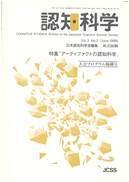Volume 3, Issue 2
Displaying 1-11 of 11 articles from this issue
- |<
- <
- 1
- >
- >|
-
1996 Volume 3 Issue 2 Pages 2_1-2_2
Published: May 31, 1996
Released on J-STAGE: October 03, 2008
Download PDF (115K)
-
1996 Volume 3 Issue 2 Pages 2_3-2_4
Published: May 31, 1996
Released on J-STAGE: October 03, 2008
Download PDF (142K) -
1996 Volume 3 Issue 2 Pages 2_5-2_24
Published: May 31, 1996
Released on J-STAGE: October 03, 2008
Download PDF (1963K) -
1996 Volume 3 Issue 2 Pages 2_25-2_35
Published: May 31, 1996
Released on J-STAGE: October 03, 2008
Download PDF (957K) -
1996 Volume 3 Issue 2 Pages 2_36-2_49
Published: May 31, 1996
Released on J-STAGE: October 03, 2008
Download PDF (1534K) -
1996 Volume 3 Issue 2 Pages 2_50-2_61
Published: May 31, 1996
Released on J-STAGE: October 03, 2008
Download PDF (1089K) -
1996 Volume 3 Issue 2 Pages 2_62-2_82
Published: May 31, 1996
Released on J-STAGE: October 03, 2008
Download PDF (3451K)
-
1996 Volume 3 Issue 2 Pages 2_83-2_95
Published: 1996
Released on J-STAGE: October 03, 2008
Download PDF (2042K)
-
1996 Volume 3 Issue 2 Pages 2_96-2_100
Published: May 31, 1996
Released on J-STAGE: October 03, 2008
Download PDF (402K)
-
1996 Volume 3 Issue 2 Pages 2_101-2_102
Published: May 31, 1996
Released on J-STAGE: October 03, 2008
Download PDF (178K)
-
1996 Volume 3 Issue 2 Pages 2_103-2_104
Published: May 31, 1996
Released on J-STAGE: October 03, 2008
Download PDF (126K)
- |<
- <
- 1
- >
- >|
